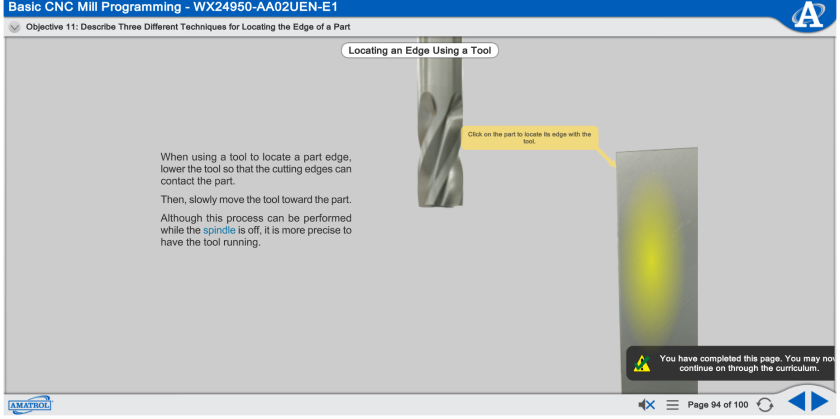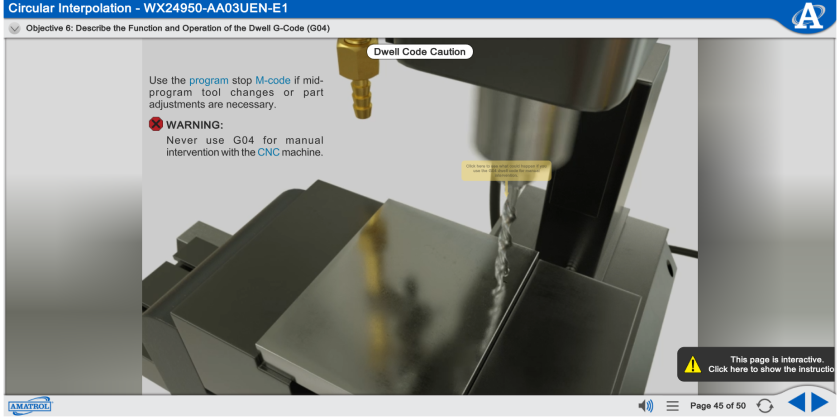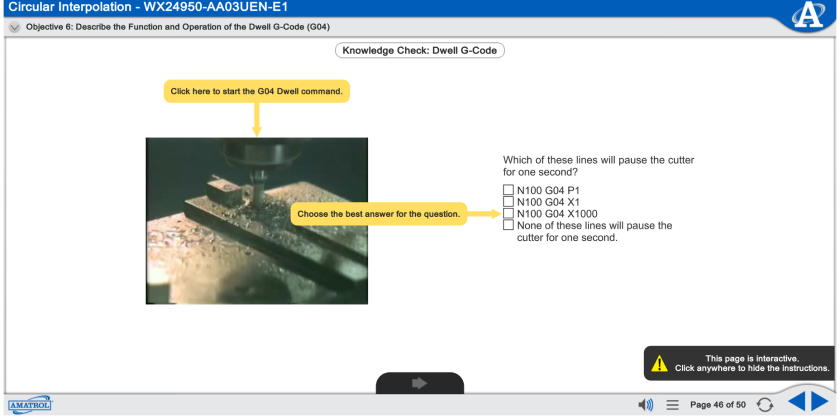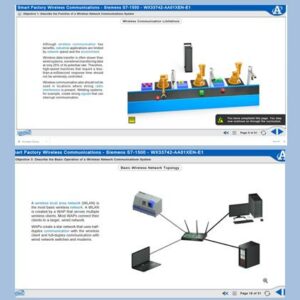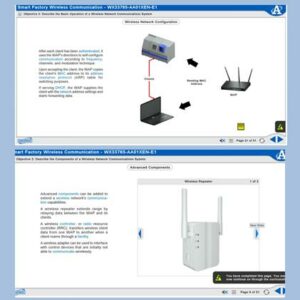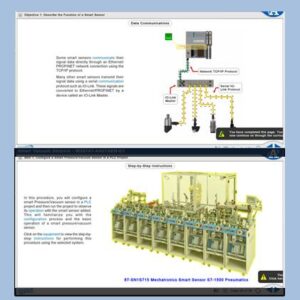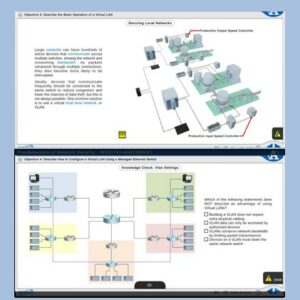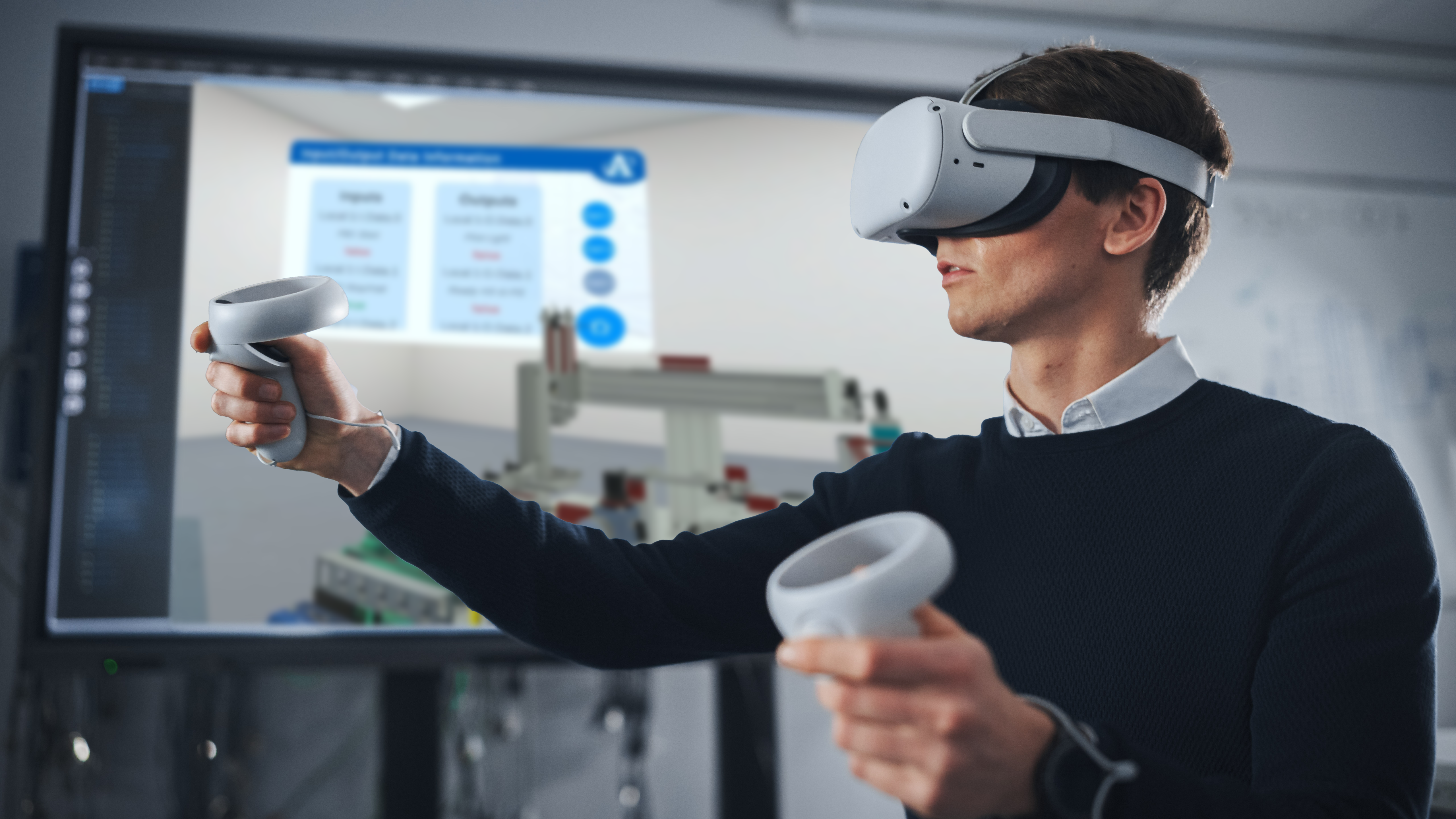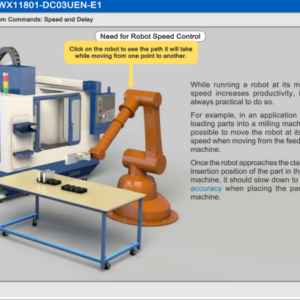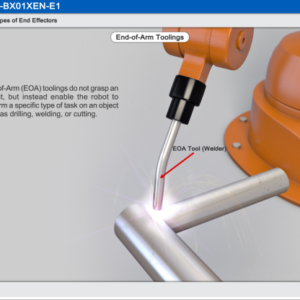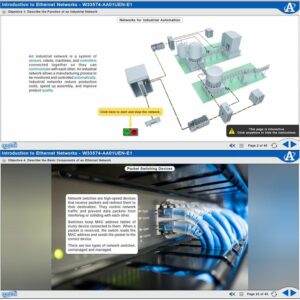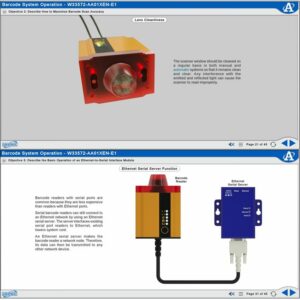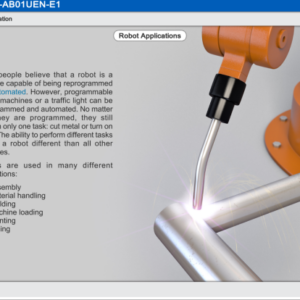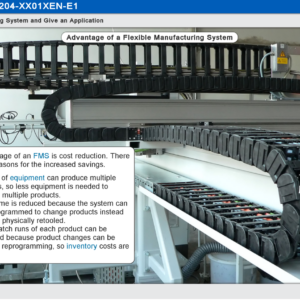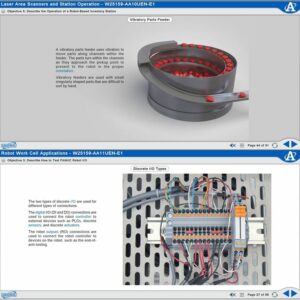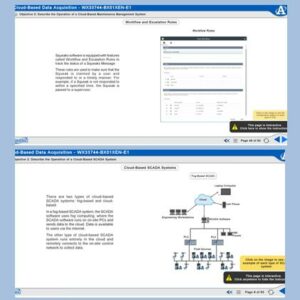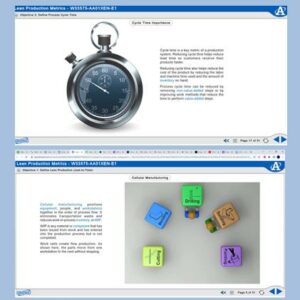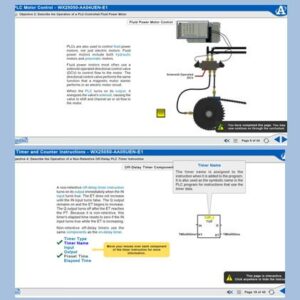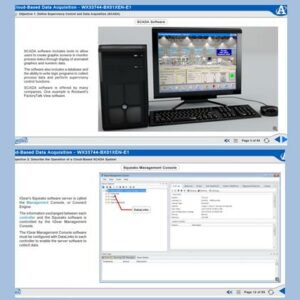Amatrol’s eLearning curriculum is unique in that it thoughtfully combines in-depth theoretical knowledge with practical, hands-on skills. This powerful combination of knowledge and skills solidifies understanding and creates a strong foundation for pursuing more advanced skills.
For example, the precision gauging eLearning course covers important topics, such as:
Introduction to CNC Programming
Learners begin with an introduction to CNC programming, including CNC mill simulation, safety, and operation. Individual lessons focus on topics like operation of a CNC mill, function of CNC mill programming software, steps for simulating a CNC mill program, nine basic CNC operation safety rules, and function of an end mill. Learners will also practice skills, such as identifying components of a CNC mill, entering and editing a CNC mill program using a text editor, simulating a CNC mill program, and determining the size and cutting direction of an end mill.
Basic CNC Mill Programming
Using Amatrol’s CNC mill eLearning course, learners will study linear interpolation, startup and shutdown blocks, tooling selection, and locating zero. Individual lessons focus on topics like structure of a CNC program, function and operation of the inch and metric G-codes, two methods of selecting tool size, and three different techniques for locating the edge of a part. Learners will also practice skills, such as programming a CNC toolpath, designing a CNC program using linear interpolation, selecting tooling, and creating a precision part using PRZ and tool offset measurements.
Circular Interpolation
In this module, learners will study various aspects and components of circular interpolation, including absolute and incremental positioning, program interpretation, and pausing CNC programs. Individual lessons focus on topics like operation of the absolute and incremental positioning methods, function of direct radius specification, interpreting a CNC program, and operation of the program stop M-code. Learners will also practice skills, such as converting coordinates between absolute and incremental positioning, programming a part path using circular interpolation, interpreting a CNC mill program that uses basic G- and M-codes, and designing a part that uses the program stop command.
Robot Workstation
Learners will conclude the CNC mill module by studying components of a robot workstation, including robot traverse axis, discrete robot communications, CNC machines discrete I/O, and CNC machine workcell. Individual lessons focus on topics like operation of a Servo robot traverse axis, how to interface a robot to solid-state discrete I/O, function of a CNC machine discrete I/O, and operation of CNC discrete I/O program commands. Learners will also practice skills, such as programming a robot that uses a Servo traverse axis, developing a robot discrete I/O interface wiring diagram, interfacing a robot with a CNC mill, and designing a CNC program to communicate to a robot via discrete I/O.



